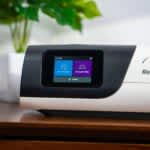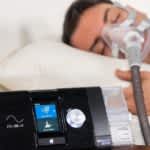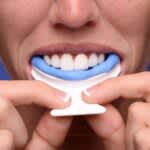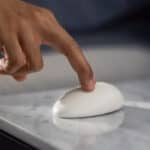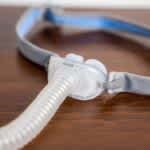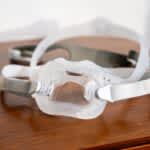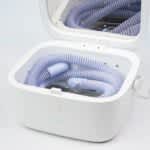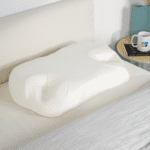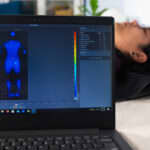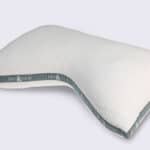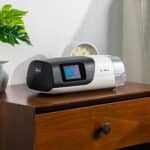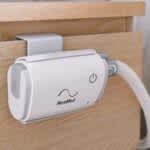The best way to stay awake while driving is to get plenty of quality sleep. Unfortunately, inadequate sleep and drowsy driving remain common problems in the U.S. More than one-third of Americans get less than the recommended seven hours of sleep each night. And 40% of drivers say they have dozed off behind the wheel at least once in the last year.
Sleepiness impairs driving in ways that are similar to driving drunk, and drowsy driving is a major cause of car crashes. Frequently feeling fatigued while driving can also be a sign of a sleep disorder or another health issue.
To understand how to stay awake while driving, it’s important to know the causes of driver fatigue, major warning signs, and who is most vulnerable to drowsy driving. Research-tested strategies for preventing drowsy driving can improve safety and help you avoid unreliable tricks to try to stay awake.
What Causes Sleepiness While Driving?
Sleepiness while driving occurs when a driver experiences fatigue. Fatigue often arises because of a lack of sleep and leads to impairment when behind the wheel.
Sleep loss can occur from staying awake for too many hours in a row. It can also arise from going several nights without getting enough sleep. Sleep disorders, other medical issues, and many medications can also contribute to sleepiness while driving.
Since insufficient sleep is common in the U.S., drowsy driving doesn’t require extraordinary circumstances. Drowsiness can creep up during commute times early in the morning and mid-afternoon. Even a long, uneventful drive is enough to make some people feel sleepy.
How Does Sleepiness Impair Driving
Sleepiness can have a major impact on your ability to drive. A lack of sleep decreases focus and coordination, disrupts memory, slows reaction time, and inhibits good judgment. The impact of sleepiness on driving is so strong that health experts often compare it to driving while drunk.
Drowsiness while driving can also result in microsleeps, which are very short bouts of involuntary sleep. A microsleep may last less than a second or as long as 30 seconds. In that time, you lose consciousness and can no longer respond to things happening around you.
Sleepy drivers may inadvertently stray off the road or into another lane. In addition, they may not react quickly enough to avoid crashes by braking or swerving away from impact, especially when moving at high speeds.
Who Is at the Most Risk of Drowsy Driving?
Despite the consequences, drowsy driving is fairly common. Certain people are more likely to have trouble staying awake behind the wheel.
People With a Sleep Disorder
Many sleep disorders are known to cause excessive daytime sleepiness that can make it hard to stay alert and awake during important tasks like driving.
Some common sleep disorders that may increase the risk of driving-related accidents include:
- Chronic insomnia, which involves persistent difficulty falling asleep and/or staying asleep
- Sleep apnea, a disorder of interrupted breathing during sleep that causes fragmented and non-restorative sleep
- Narcolepsy, a neurological condition that causes significant daytime sleepiness
People with sleep disorders may not always be aware of their condition, which may leave their disorders untreated and put them at greater risk when driving.
Teenagers and Young Adults
Drivers aged 16 to 24 account for a large portion of drowsy driving traffic accidents. Several factors play a role in this phenomenon. Compared to adults, teens tend to go to sleep later at night. Coupled with early school start times, this means that many teenagers do not get their recommended 8 to 10 hours of sleep every night.
On top of not getting enough sleep, high school students often face demanding schedules filled with homework and extracurricular activities. Evening driving between sports, after-school jobs, and social events can also lead to drowsy driving.
Moreover, the brains of teens and young adults are still developing, which can affect their ability to sustain the attention and decision-making required for safe driving. Research also suggests that teens and young adults may be more susceptible to impairments in their driving when they don’t get enough sleep.
People Taking Certain Medications
Many common medications have a sedating effect, meaning that they make you feel sleepy. This puts you at an increased risk for drowsy driving, especially if you’re starting a new prescription, increasing your dose, or taking multiple medications.
Older adults may be more susceptible to medication-related drowsiness while driving, since they are more likely to take multiple medications that can cause sleepiness. Older people also metabolize medications more slowly, which means that any sedating effects may last longer.
Medications that cause drowsiness can have more significant effects when combined with alcohol, lack of sleep, and certain illicit drugs. Whenever starting a new medication, talk with your doctor about the possible side effects, including drowsiness, and how to avoid them.
Make sure to let your doctor know if you experience fatigue related to any prescription or over-the-counter drug. You may also wish to forego driving when taking a new medication until you know how it affects you.
Commercial Drivers
People who drive for a living are at a higher risk of drowsy driving. Common requirements of the profession, such as overnight driving and driving for long hours, can result in regular sleep loss.
Another contributing factor for commercial drivers is obstructive sleep apnea, a sleep-related breathing disorder that can contribute to daytime sleepiness. While this condition is common in the general public, studies have found it to be especially prevalent in commercial truck drivers.
The consequences of drowsy driving for professional drivers can be severe. Some commercial driving involves large vehicles like semi-trailer trucks that require greater coordination and concentration to operate and can cause more damage when an accident occurs.
Health Care Staff
Health care is a critical field and requires workers to be active around the clock. Nurses often work night shifts and long hours, and some doctors may work shifts lasting 24 hours or more.
These challenging work hours, as well as the stress of the job, can contribute to chronic sleep loss and low-quality sleep. Although the industry is starting to move away from marathon shifts, health care staff working irregular hours continue to have an elevated risk of fatigue-driven car accidents.
Shift Workers
Shift workers are people who have to be on the clock outside of a 7 a.m. to 6 p.m. schedule. People who work night shifts or rotating evening shifts may struggle to get the sleep they need. This puts shift workers at an increased risk for falling asleep while driving, especially when heading home late at night or in the early hours of the morning.
What Are the Warning Signs of Drowsy Driving?
Knowing the warning signs can enable you to recognize drowsy driving in yourself and others and could help prevent an accident.
It can be difficult to judge your own performance and energy levels while you are driving. You should be on the lookout for any of these signs that you or another driver may be struggling to stay awake while driving:
- Blinking more than normal
- Rubbing your eyes
- Heaviness in your eyelids
- Yawning
- Trouble holding your head up
- Lack of focus or concentration
- Missing a turn, highway exit, or street sign
- Drifting between lanes or into the shoulder
- Hitting the curb
- Following too closely behind another car
- Short-term memory lapses, including an inability to remember the last few miles
- Wandering thoughts
- Moodiness or irritability
These warning signs should be taken seriously. Anyone experiencing any of these issues while driving should pull over as soon as possible to prevent falling asleep at the wheel.
Tips to Prevent Falling Asleep at the Wheel
The best solution to prevent falling asleep at the wheel is to get a good night’s sleep. There is no substitute for sufficient sleep to avoid fatigue.
By contrast, many popular strategies to fight sleepiness while driving simply don’t work very well. Studies have found that you can’t rely on tricks like eating and drinking, blasting the radio, or rolling down the windows to get a rush of cold air.
Instead, it’s best to take a preventative approach and avoid getting behind the wheel when tired. This involves prioritizing sleep, avoiding sleep disruptions, and planning ahead. When driving while sleepy can’t be avoided, proven methods like taking a nap and consuming caffeine may offer short-term help.
Prioritize Sleep
The single most effective way to stay awake while driving is to get plenty of high-quality sleep every night. Sleep is essential for good health. Adequate sleep helps keep your mind sharp and ensures you can focus and react to changing conditions.
How much sleep a person needs depends on their age. Adults 18 years or older need at least seven hours of sleep each night, and younger people need more sleep. Sleep experts recommend teenagers get 8 to 10 hours for optimal health and focus.
Plan Ahead
Try to plan driving trips wisely in order to avoid driving when you are likely to be tired.
It’s normal to feel more tired the longer you stay awake, so it may help to limit driving later in the day or when you’ve had extended stretches without rest.
Even with plenty of sleep the night before, you’re more likely to feel fatigue at certain times of the day, such as in the afternoon and late at night. If possible, try to reduce driving at those times or early in the morning if you may struggle to get enough sleep the night before.
If you can’t avoid traveling at times of peak sleepiness, be aware of the risks and act accordingly. While not foolproof solutions, you can try measures to ease your fatigue such as naps and caffeine consumption.
Take a Nap
Napping can be an effective strategy to fight fatigue and keep you alert. Taking the time for a brief nap can help avoid sleepiness and increase alertness when you get behind the wheel.
If you start to feel any of the warning signs of sleepy driving, pull over as soon as you can and take a short nap. A quick 20-minute nap is a time-efficient way to boost driving performance. If you have time in your schedule, a pre-drive nap may help alleviate sleepiness before you start your trip.
To get the most out of your nap, set an alarm so you don’t oversleep, then lie down or recline your car seat to get comfortable. Ear plugs and an eye mask can help block out noise and light.
Longer naps of around 90 minutes can also help increase alertness. Just be aware that you are more likely to feel groggy and disoriented after a long nap or if you nap for between 30 and 90 minutes. If you nap for more than half an hour, be sure to give yourself time to let the post-nap grogginess wear off before you start driving again.
Consume Caffeine
Consuming caffeine is a temporary measure that can help boost your energy levels, reaction times, and alertness while driving. While coffee is a popular choice, choose whichever form of caffeine you enjoy most.
Spreading out small doses over time may be better than one large dose all at once. Pairing your caffeine consumption with a nap may be even more effective. It takes caffeine about half an hour to kick in completely, so consuming it right before a brief nap may give an extra boost of alertness.
Make sure to be thoughtful about your caffeine intake and realistic about how much it will help. Consuming caffeine may provide a false sense of security if you are extremely sleepy.
Avoid Alcohol and Sedating Medications
When you need to drive, avoid alcohol and any medications that cause drowsiness. Drinking alcohol impairs your ability to drive, and it can also make you feel sleepy. Even worse, alcohol can exacerbate the effects of sleep loss.
Many common prescription and over-the-counter medications can also make you feel sleepy. Check the side effects of any medications you frequently use, and don’t combine alcohol with medications that cause drowsiness.
If you’re feeling unsure about which medications are safe to take when driving, consult with your doctor or pharmacist. They can help you understand the side effects of your medications and the risks of drowsy driving. In some cases, they may be able to adjust your dose, change your medication schedule, or find alternative medications to help you avoid drowsy driving.
Choose Another Form of Transportation
If you’re worried that you may not be able to prevent sleepiness before traveling, consider choosing another form of transportation. Public transportation, carpooling, taking a taxi or app-based ride, or walking are all possible alternatives to driving.
Of course, not everyone has the access or financial resources to use another mode of transportation. Sometimes you may have to rely on your car. But if you live in an area that is walkable or has public transportation, using these options can eliminate the risks of drowsy driving.
When to Talk to Your Doctor
If you frequently find yourself feeling sleepy while driving, talk with your healthcare provider. Excessive daytime sleepiness may be a sign of insufficient sleep, an untreated sleep disorder, or another underlying medical issue.
You should also tell the doctor if you experience any of the following issues:
- Frequently waking up unrefreshed in the morning
- Struggling to fall asleep or stay asleep through the night
- Loud snoring with choking or gasping sounds while sleeping that may first be observed by a bed partner
- Drowsiness when taking certain medications
Your doctor can review your symptoms, make an informed diagnosis if needed, and empower you to improve both your sleep and your safety behind the wheel.
References
Ask the Sleep Doctor
Have questions about sleep? Submit them here! We use your questions to help us decide topics for articles, videos, and newsletters. We try to answer as many questions as possible. You can also send us an email. Please note, we cannot provide specific medical advice, and always recommend you contact your doctor for any medical matters.

